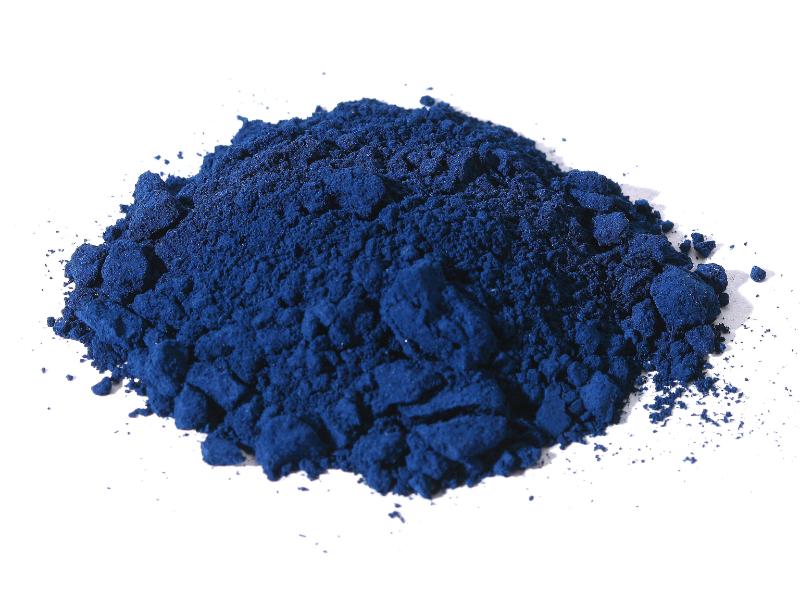Search in medicinals
Indigo Naturalis
Indigo
青黛 〔青黛〕 qīng dài

Alternate English names: natural indigo
Alternate Chinese names: 靛花 diàn huā; 青蛤粉 qīng gé fěn; 青缸花 qīng gāng huā; 蓝露 lán lù; 淀花 diàn huā; 靛沫花 dì mò huā
Kingdom: Plant
Origin in PRC Pharmacopoeia: Baphicacanthus cusia (Nees) Bremek.; Polygonum tinctorium Ait.; Isatis indigotica Fort. (PRC Pharmacopoeia)
Origin in unofficial sources: Baphicacanthus cusia (Nees) Brem.*; Indigofera tinctoria L.; Isatis tinctoria L.; Isatis indigotica Fort.*; Polygonum tinctorium Ait.*
Use: Medicinal
Category: Heat-clearing agents / Heat-clearing toxin-resolving agents
Properties: Salty; cold.
Channel entry: Liver, lung, and stomach channels.
Actions and indications:
- Clears heat and resolves toxin; cools the blood and disperses swelling: Macules due to heat toxin; vomiting of blood (blood ejection) and nosebleed due to frenetic movement of hot blood; mumps with painful swelling and throat impediment; welling-abscesses and
sore s due to heat toxin. - Clears the liver and drains heat: Child fright wind with heat effusion and convulsions.
- Clears lung and liver heat and disperses phlegm: Cough due to lung heat or liver fire invading the lung.
Dosage and method: Oral: 1.5–3g. Taken as a powder drenched in fluid or made into pills. The active constituents are not easily soluble in water. Qīng dài can be applied topically for skin conditions, either dry or mixed with liquid.
Warnings: Use with care in stomach cold.
Quality: Good quality is light, powdery, and floats on water.
Production area: Fújiàn, Shànghǎi, Jiāngsū.
Back to search result Previous Next